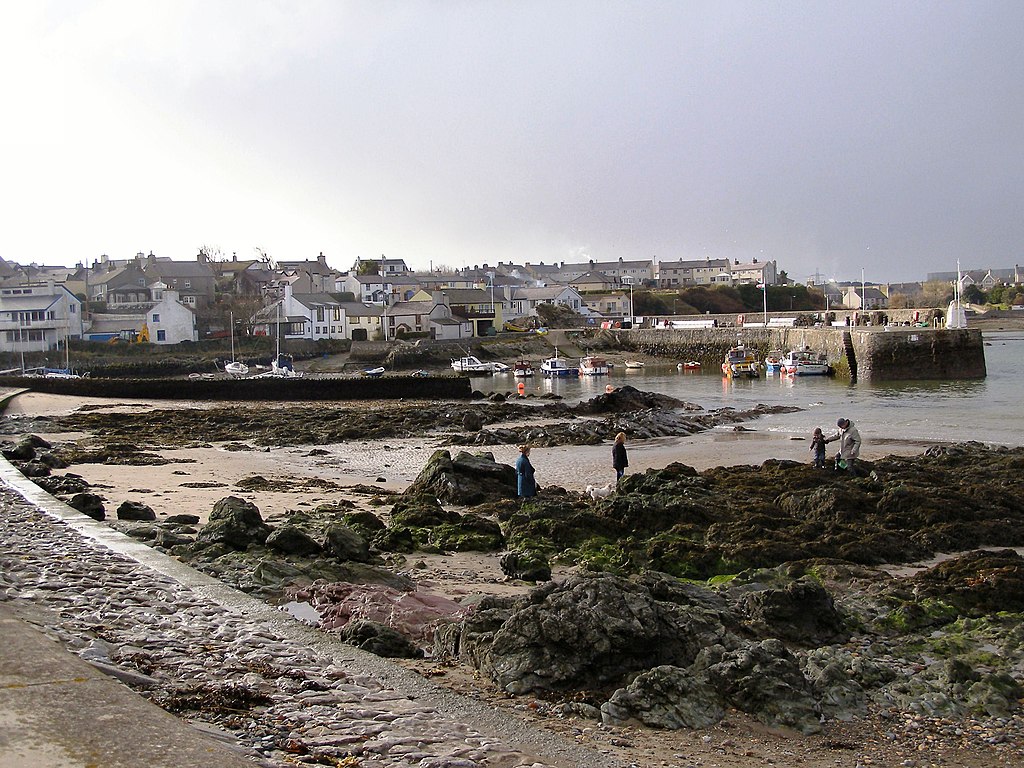Cemaes is the most northerly village in Wales, is located about five miles west of the nearest town Almwych. Although Anglesey is technically an island, it is joined to Wales by two bridges.
The bay is a small natural bay offering two sandy beaches separated by a short sea front area and the pretty little harbour. The area is notable for being a beautiful wild, windswept area of coastline that is highly accessible at Cemaes Bay.
A lot of the architecture is late 20th and 21st century and even the older houses are mostly single story. Down by the harbour, there are traditional pretty white Anglesey cottages, and some colourful older terrace houses line the high street, where there are shops to fulfil most needs. There are two pubs close to the seafront and a few cafes and restaurants too. The high street is a short walk from the beach. Cemaes bay also has a central park area.
Cemaes was once a busy fishing village that was famed for its salt herring. Also, an important location for ship building, where merchants lived alongside the fishermen, sending out their wares from the port. The limestone and marble that was used to build many of Liverpool’s buildings was transported from Cemaes Bay. These days the harbour is tranquil and mainly used by pleasure craft.
Unusual for a rural village, Cemaes has a rich heritage, probably due to its safe harbour. Still today, the brickworks is a prominent landmark on the outskirts. Other industrial heritage sites include the woollen mill where they used to weave famous Welsh Blankets. Today, driving in and out of Cemaes, the skyline is dominated by modern windmills generating electricity.
The area is classified as An Area of Outstanding Natural Beauty (AONB), and much of the surrounding countryside and coastline is under the stewardship of the National Trust.
Cemaes Bay is known for its tranquil atmosphere, locals and visitors describe the village as a place to relax and unwind; a place to recharge.
On the eastern side, there is the 5th-century Llanadrig and St Patrick’s Church and cave, legend has it, this is where St Patrick set off for Ireland. A little further along the coast to the east is a prehistoric hill fort Dinas Gynfor.
Activities wise, the harbour is a popular place for sailing, windsurfing and other water sports and the beaches are great for families. It’s a great area for walking. The roads are good on Anglesey, and the coastal routes afford plenty of lovely sea views.

